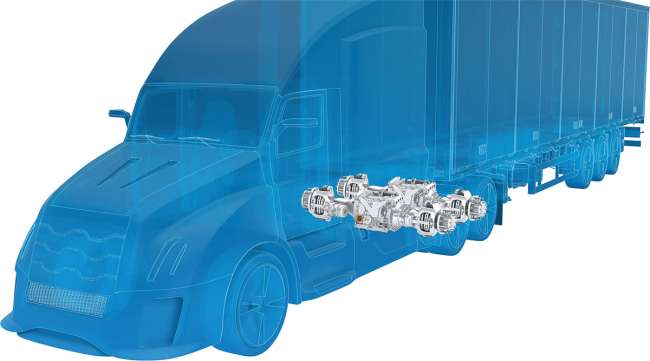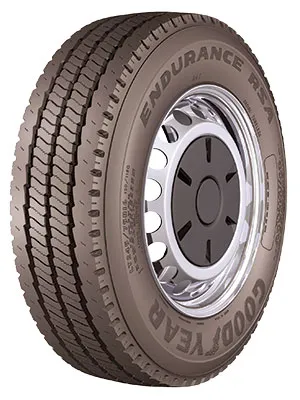Trucking Industry Works to Make Electric CVs More Affordable

[Find the latest in equipment & maintenance: Explore this quarter's issue of Calibrate]
As adoption of electric-powered commercial vehicles grows, component manufacturers are looking more closely at offering services and devices to attract more fleet buyers. Those new services and devices in many cases are lowering the cost of entry for fleets by making the vehicles more affordable or more responsive to their needs and easier to incorporate into their operations.
Trucking companies are often seeking reduced maintenance needs and greater energy efficiency when considering a transition to electric. However, the hurdle of price gets in the way. Currently, the cost of EVs is nearly twice as much as a diesel unit, said Jeremy Frenznick, senior director of commercial vehicle engineering for Dana Inc.
“One of the big pluses of using electricity to power vehicles is that the electric truck has an energy efficiency ratio that is approximately 3.5 times greater than that of a diesel engine at highway speeds,” Frenznick said, adding that when operating in stop-and-go applications, that efficiency is five to seven times greater.

More Q3 Calibrate
►Fleets Tackle Parts Shop Organization
►Freeze: Step Up Push to Bring Veterans Into Trucking
►Trucking Industry Works to Make Electric CVs More Affordable
►Baxter: Natural Gas Engines Could Reduce Fuel, Maintenance
►TMC Corner: Summer Conference Places Priority on Education
Explore the Issue!
He also noted that EV maintenance will involve an estimated 30%-40% fewer parts than diesel.
“Additionally, fleets can anticipate extended maintenance schedules for EVs with only basic axle lube maintenance and high-voltage cooling system maintenance at approximately 100,000 miles depending upon duty-cycle,” Frenznick said.
Earlier this year, ZF Group rolled out its modular, integrated, axle-based e-powertrain system, AxTrax 2, that promises to free up valuable frame rail space, said Julien Plenchette, senior vice president at ZF Group.
“The purpose of integration was really to reduce mass, reduce space, reduce or increase efficiency,” he said. “Having a coaxial design allows you to send the power from the motor, straight into the wheels with the gear system in the middle and have controls over this, [plus] that brake [energy] recuperation.”

Calzada
Kevin Calzada, global product strategy and marketing manager for Eaton’s vehicle group, said fault protection is one of the biggest challenges. “Rather than developing a totally customized product, for one single customer in one single application, we’ll develop a modular configurable solution that could work for a single array range of applications for a single customer, or even for multiple customers,” he added.
The manufacturer has worked to make the power distribution unit far easier to service with the use of Eaton's Breaktor circuit protection unit. The Breaktor device allows technicians much easier access to service the equipment, Calzada said. It features resettable circuit protection solutions that perform akin to a circuit breaker. Now instead of having to replace the unit, technicians can reset it.

Fatouraie
Mohammad Fatouraie, director of engineering at Bosch USA, said that fit and total cost of ownership are also major considerations in designing and manufacturing EV components.
“We do collaborate fairly closely over the years with the OEMs, to understand their pain point for specific applications, and include that what we call simultaneous engineering,” Fatouraie said. “We are incorporating requirements from the application, but also from the manufacturing side of it. I think the name of the game is the efficiency, and the efficiency would implement or manifest itself in various components.”
EV Tires
Tire manufacturers have long anticipated the arrival of EV adoption and made several lines of products to cater to commercial fleets. Dustin Lancy, product marketing manager for The Goodyear Tire & Rubber Co., noted the tiremaker has designed its latest line with enhanced load-carrying capacity to meet the needs of heavier pickup and delivery EVs.

Tire manufacturers, like Goodyear, have long anticipated the arrival of EV adoption. (Goodyear)
“There is a balance between tread design, compound selection and traction features to deliver products that will perform on these types of vehicles,” Lancy said.
MORE: Goodyear Adds Regional Haul Trailer Tire
Shaun Uys, vice president, U.S. market, commercial vehicle tires for Continental AG, said when developing EV-compatible truck tires, they are looking to achieve low-rolling resistance, low-rolling noise and more mileage.
“This allows for a smoother, more energy-efficient ride for fleets,” he explained. “Reducing rolling resistance can lead to less energy consumption and extend the EV’s range.”
Uys added that drivers of EVs are expecting longer mileage and instant torque, which can cause more wear on the tires, especially on a heavier vehicle. “Achieving the balance of a truck tire to perform under these conditions is challenging for a tire manufacturer,” he said.
Continental has developed two green, efficiency-boosting concepts that can make an immediate impact on sustainability efforts and EV-compatible solutions — the Conti Urban Green Concept tire and ContiTread EcoPlus Green retread.
MORE: How Continental Is Evolving Into Complete Tire Management
The Conti Urban Green Concept tire contains nearly 50% renewable and recycled materials, while the tread itself is composed of just under 70% renewable material.
Want more news? Listen to today's daily briefing below or go here for more info:




